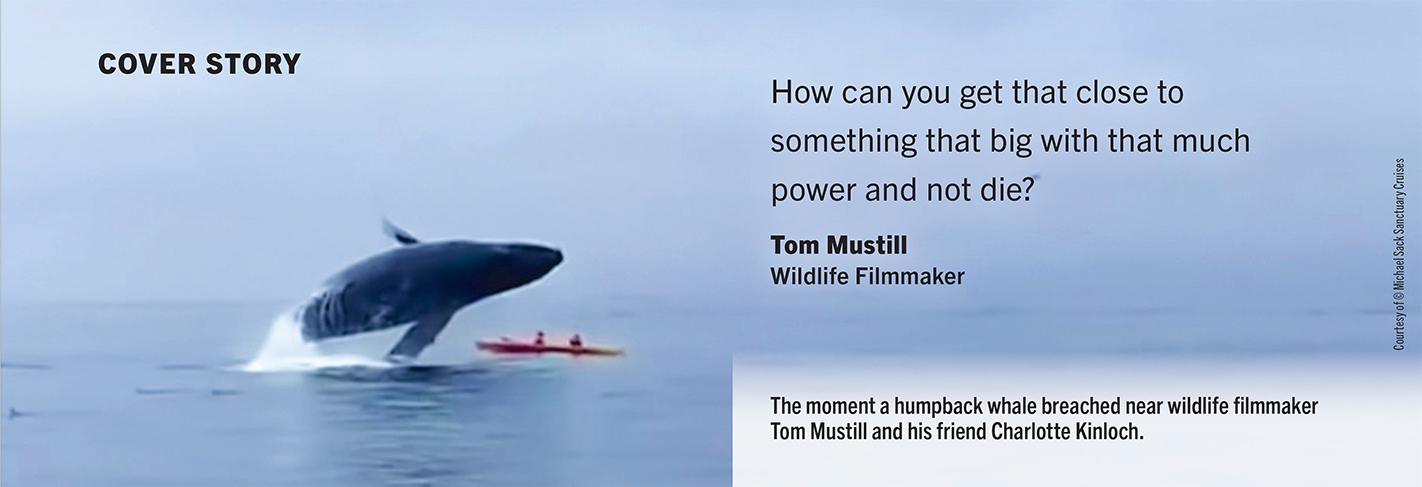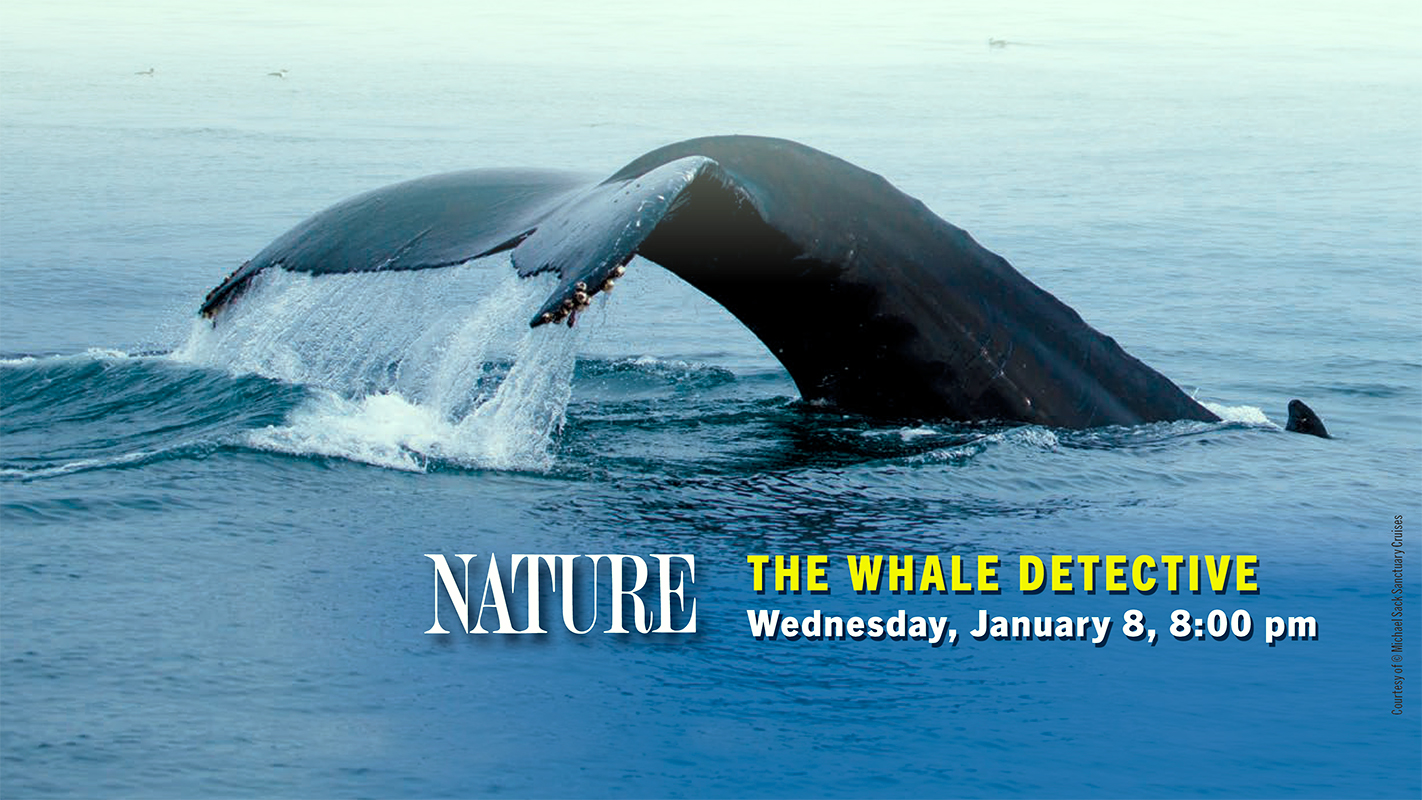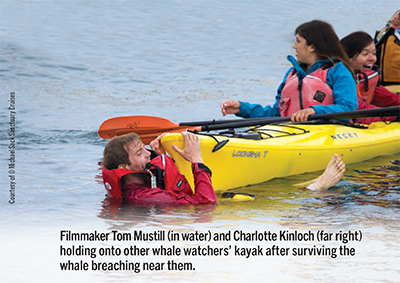The PBS Hawaiʻi Livestream is now available!
PBS Hawaiʻi Live TVCover story by Jody Shiroma, PBS Hawaiʻi

Imagine sitting in a kayak at sea, looking up, and seeing approximately 60,000 pounds of whale coming at you. Amazingly, the kayakers – wildlife filmmaker Tom Mustill and his friend Charlotte Kinloch – lived to tell the tale. And it became Mustill’s mission to understand why the traumatic incident took place.
It happened in 2015. A 30-ton humpback whale breached in Monterey Bay, California, and just missed landing on the duo in the kayak.
Viral videos recorded by witnesses left Mustill questioning whether the whale was deliberately trying to cause harm – or trying not to.

Mustill met with scientists, a whale expert, a whale tracker, a group dedicated to disentangling whales from fishing gear debris and individuals who survived similar close encounters with whales. He chronicles his inquiry in NATURE: The Whale Detective, premiering on PBS Hawaiʻi on Wednesday, January 8 at 8:00 pm.
Mustill found that though we’ve observed the ways that whales splash – tail throw, tail slap, chin slap, pec slap and breach – we don’t know what prompts these behaviors. While his investigation enabled him to come up with a plausible reason for why the whale breached so close to him and Kinloch, it is only a theory.

But Mustill’s search did uncover interesting observations and discoveries about whales and greater questions about humans’ relationship with whales and their future.
Here in Hawaiʻi, we know that whales were considered by Native Hawaiians to be sacred. Called koholā, the whales were believed to be the majestic animal form of the Hawaiian ocean god Kanaloa. Ali‘i wore necklaces adorned with whale teeth and bone.
There are locations around the Islands associated with whales, including Pu‘ukoholā Heiau located in Kawaihae, Hawaiʻi Island; northwest Kahoʻolawe; Palaoa Hill, Lānaʻi; and Olowalu, Maui.
Noteworthy Facts:
- Humpback whales have no teeth. They can barely nibble you, let alone swallow you. Their throats are only slightly larger than a human throat.
- Inside a humpback’s pectoral fins are the biggest arms on the planet.
- Over the past 40 years, the number of North Pacific humpbacks has increased from 1,000 to nearly 23,000, with as many as 14,000 migrating to Hawaiʻi each winter.
- Historically, humpbacks travel more than 3,000 miles from the Gulf of Alaska to Hawaiʻi, and may be seen in Hawaiian waters from November through May. Peak sightings are generally from January to March.
